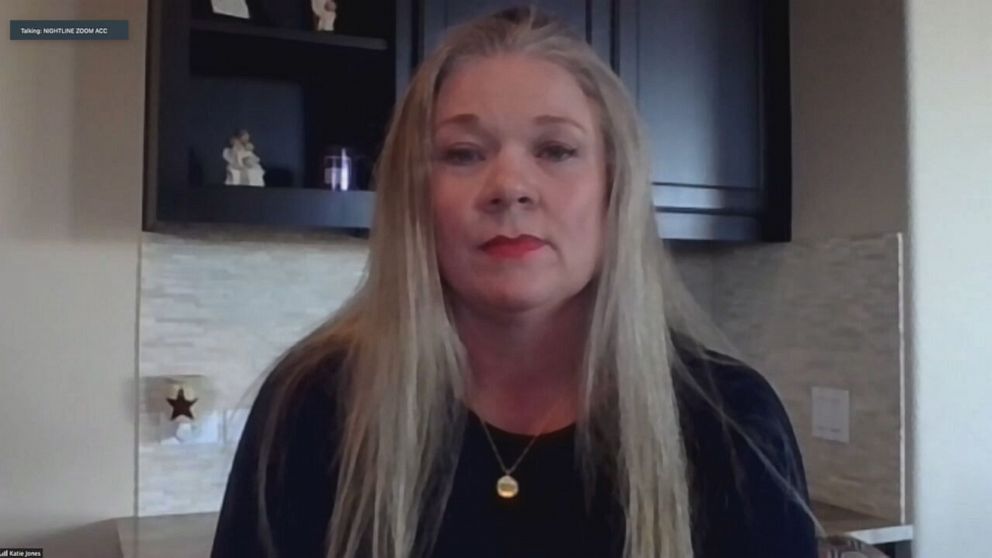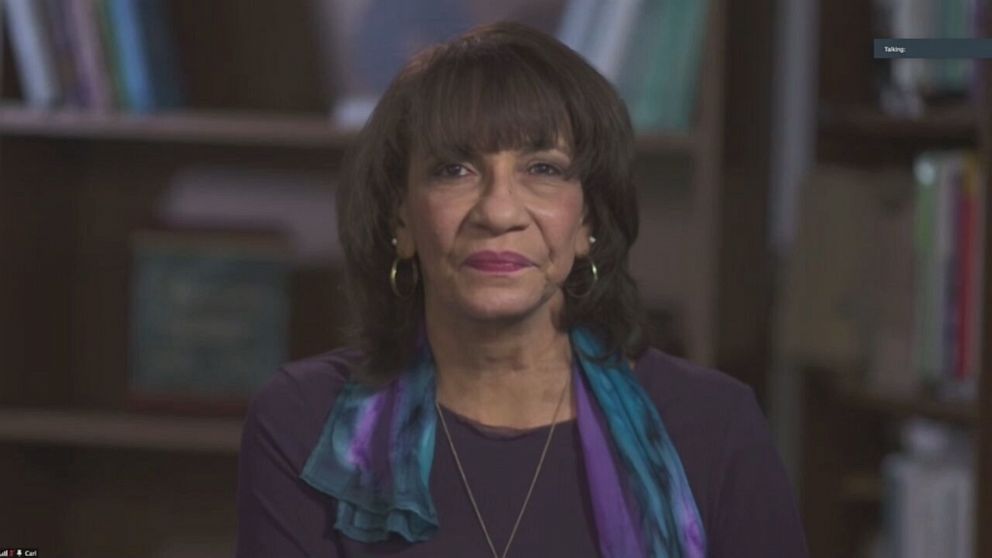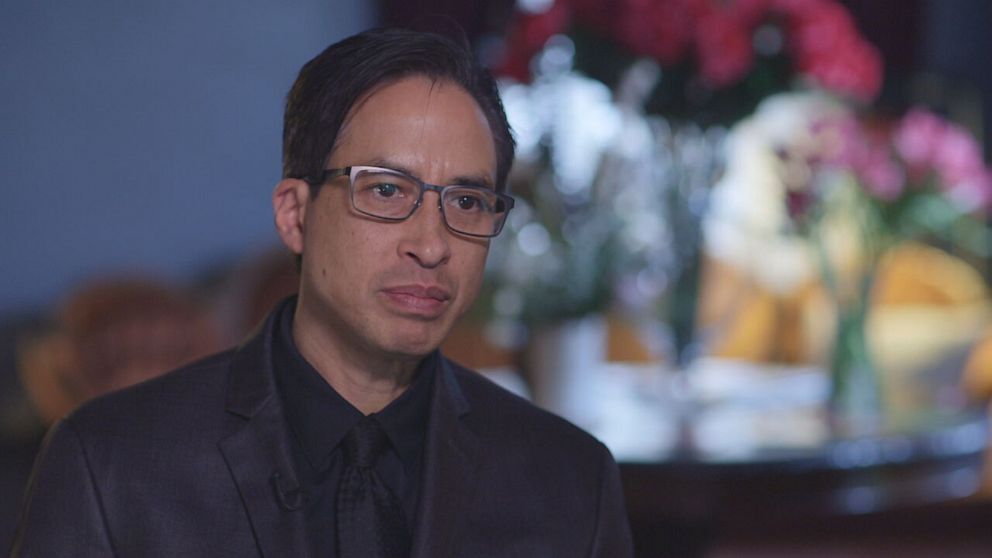Amie Harwick's loved ones hoping for change as domestic violence spikes in pandemic
The pandemic has further isolated domestic violence victims, one advocate said.
Nearly a year after sex and relationship therapist Amie Harwick was allegedly strangled and thrown off her third-floor balcony by an ex-boyfriend, some of her loved ones are hoping to change domestic violence laws.
“If we can update the law so that more women can get help, more women can get out of these situations and more women are saved from further violence, I think that’s the best legacy for what happened,” said Robert Coshland, Harwick’s best friend.
Harwick, a successful Los Angeles therapist who socialized with celebrities and was once engaged to Drew Carey, was celebrating Valentine’s Day with her friends on the night she died last year. When she returned to her Hollywood Hills home at around 1 a.m. on Feb. 15, she was unaware that, according to police, her door had been kicked down and someone was “lying in wait” inside.
After Harwick was thrown from her balcony, she was taken to the hospital, where she died from blunt force trauma and strangulation. Her ex-boyfriend, Gareth Pursehouse, is accused of her murder. Pursehouse has pleaded not guilty and is being held without bail after an attempted escape as he awaits trial, where he could face the death penalty or life in prison if convicted.

One in four women will experience some form of intimate partner violence in their lifetime and report some form of impact related to the violence, according to the Centers for Disease Control and Prevention.
But as many Americans continue to remain at home during the ongoing coronavirus pandemic, emerging data is beginning to suggest that intimate partner violence has increased since the beginning of lockdowns.
Katie Ray-Jones, CEO of the National Domestic Violence Hotline, says the organization has received more than 21,000 calls in which the person on the other line specifically mentioned the pandemic. And while calls to the hotline dropped by 6% in March 2020, when stay-at-home orders made it difficult for victims to reach support, Ray-Jones said they increased 15% from the previous year once states and cities began to lift them.
“Any time in our country where there’s been a natural disaster or even a recession, victims of domestic violence reported that the abuse in their home increased not only in frequency but also in severity,” Ray-Jones said. “We are seeing similar characteristics exhibited during this time of the pandemic, so we have heard from survivors … maybe their relationship already had emotional abuse [and] it has escalated to physical abuse.”

Advocates like Ray-Jones have been calling the recession from the pandemic the “she-cession” because of its impact on women, who comprised five million jobs lost in 2020. The financial crisis has led to financial insecurity for many women, including those impacted by domestic violence.
“We’ve heard stories that when stimulus checks were issued, the victim survivor didn’t have access to those funds or the abusive partner took those funds from the victim,” Ray-Jones said. “This is key in terms of how we think about a survivor feeling like they can leave a relationship when they’re economically impacted.”
“We’ve also heard stories of survivors who lost their job and returned to the partner who uses violence because they didn’t have anywhere else to go,” she added.
Ruth Glenn, a survivor of intimate partner violence who’s now the CEO of the National Coalition Against Domestic Violence, believes that domestic violence victims are even more isolated and in danger today than they were before the pandemic.
“As a victim, you feel totally trapped. There is hopelessness along the way. Helplessness,” she said. “And then when you’re trapped in a home with somebody who now has another tool and another means of control, it can be very, very frightening. And then on the outside of the other door, metaphorically, is this pandemic. So what do I do? Even if I have made up my mind now that it’s no longer safe for me to be in this situation now, what do I do?”

Even for those who are able to leave their partners, like Harwick, the threat of future violence from that same person lingers. Although Harwick had dated Pursehouse nearly a decade before her death, she had told her friends and the authorities several times that he would stalk and harass her.
In 2011, she filed for a temporary restraining order against Pursehouse, saying in court documents that he had “suffocated me, punched me, slammed my head on the ground, kicked me,” and that he pushed her out of a car on the freeway. Nine months later, she filed for another one that would expire in 2015 after he reportedly threatened her that “things will get worse.”
Last January, a month before her death, Harwick was on the red carpet for an awards show in Los Angeles when she saw Pursehouse, a photographer and software developer, working the event.
Hernando Chavez, a friend and therapist colleague of Harwick’s, told “Nightline” he didn’t know who the Pursehouse was at the time.
“But I did hear a couple of things like, ‘You broke my heart. What are you doing here? How could you be here?’” he said. “So I checked in on her and she said, ‘I’m OK, I’m just going to talk here for a bit.’”

Chavez described Harwick as being in “therapist mode” for much of the remainder of the night.
“She shared with me how she was trying to de-escalate the situation. … She said that he started yelling, that he was calling her names, that he was really sort of scaring her,” he said. “We also discussed her safety plan, and her being an expert with domestic violence and supporting victims in her practice, she knew everything she needed to do.”
During that conversation, Chavez said they spoke about how she was going to change the locks in her home, add more locks to the windows and install security cameras. The next day, he said she texted him, saying that Pursehouse had found her number online and was trying to contact her.
“So this is, I think, the start of a person who is now becoming fixated on her again,” Chavez said. “A person who is sort of that ex that, [in] seeing her, I think, reignited some of his obsession toward her.”
Coshland, Harwick’s friend, said he asked Harwick after the awards show incident if she could renew the restraining order against Pursehouse. “And she was like, ‘Well, he didn’t actively threaten me,’” he said.

“Victims have to reapply, go through the process again, and sort of prove that they’re still afraid in order to get a restraining order renewed,” said Emily Sears, a model in LA who saw Harwick as a therapy patient for what she said was her own trauma from having a stalker.
“I think it would be a lot more fair if the perpetrator would have the onus on them to prove that they’re no longer a threat,” Sears added.
Chavez said that if there was a restraining order still in place during the awards show, Harwick could have called 911.
“The next day, she could have contacted the police and there would have been a violation of the restraining order, and maybe that could have changed the course of what happened,” he said.
Experts say that filing for a restraining order is both emotionally and legally challenging, especially today.
“Restraining orders are really important tools, particularly when a victim has reported a crime to law enforcement and there’s a delay in getting an arrest,” said Carrie Goldberg, a victims rights lawyer in New York City. “However, there are some drawbacks… It required that there be a face-to-face interaction between the victim and the offender in court. That can be terrifying and traumatizing to a victim, particularly if they’ve just broken up with somebody and they’re being stalked.”

Goldberg said there’s also a risk that the offender might not abide by the court’s protective order, and instead retaliate against the victim.
“They’re temporary, so even if you get what’s called a permanent protective order, rarely have I seen them last for more than five years,” she said.
She said that if the victim wants to renew their restraining order, they often have to show that the offender has violated the restraining order and that even when the victim reports a violation, the police aren’t always quick to respond.
As part of their efforts to change this reality for those at risk of future violence, Harwick’s friends created a petition calling for new laws to protect victims, including one that would keep restraining orders active until “the victim requests it to be canceled.” It currently has nearly 300,000 signatures.
“Protective orders aren’t long-lasting,” said Jessica Everleth, Harwick’s friend and former co-worker. “You have to keep going back and showing there’s an immediate threat to your personal safety. They should be long-lasting, if not permanent, for a serial killer situation. … Why aren’t we trying to better police the behavior of the stalker instead of putting the responsibility on the women or man, in some cases, who is being stalked?”
“For this to happen to her means it could absolutely happen to anybody in this country, absolutely anyone,” Coshland said. “And it, unfortunately, happens all too frequently.”




